
The Majestic Himalayas: Nature's Grandeur
Explore the enchanting beauty of the Himalayas, a majestic mountain range offering adventure, culture, and breathtaking landscapes across five countries.
The Himalayas, one of the world's most stunning mountain ranges, offer a breathtaking experience for tourists seeking adventure, serenity, and nature's beauty. Spanning five countries, these peaks are a haven for trekkers, mountaineers, and nature enthusiasts alike, showcasing awe-inspiring vistas, diverse flora and fauna, and a rich tapestry of cultures.
A brief summary to Himalayas
Local tips
- Visit during the spring or autumn for the best weather and stunning landscapes.
- Consider hiring a local guide for trekking routes to enhance your experience and support the local economy.
- Pack layers, as temperatures can vary significantly between day and night.
- Stay hydrated and acclimatize properly to avoid altitude sickness when trekking at higher elevations.
Getting There
-
Car
If you're traveling by car within the Himalayan region, start by ensuring you have a reliable vehicle as the roads can be challenging. For instance, if you're in Manali, head east on NH3 towards Kullu. After about 40 km, you will reach Kullu. Continue east for another 30 km, and you will reach the town of Aut. From Aut, take the left turn onto the Kullu-Manali Highway (NH3) and follow the signs to Manali. The drive will offer picturesque views of the mountains, but be cautious of landslides during monsoon season.
-
Public Transportation
For public transportation, you can take a bus from major towns like Shimla or Manali. The Himachal Road Transport Corporation (HRTC) operates regular buses to various destinations in the Himalayas. For example, from Manali, you can catch a bus to Leh, which takes approximately 18 hours. Ensure you book tickets in advance, especially during peak tourist seasons, as they can sell out quickly. The fare is usually around ₹1500-₹2000 per person.
-
Taxi
Hiring a taxi can be a more comfortable option if you're traveling in a group or with family. Taxis are available at major bus stations and airports. For example, from Dharamshala to McLeod Ganj, it's a short 10 km ride. Expect to pay around ₹300-₹500 for a one-way trip. Always negotiate the fare beforehand or ask for the meter to be used.
-
Local Shuttle
In some areas, local shuttles or shared taxis operate for specific routes, especially in hilly terrains. For instance, in the Nainital region, you can find shared taxis that connect various viewpoints and towns. The cost is typically around ₹50-₹100 per person per trip, depending on the distance. Check with local shops or hotels for current shuttle schedules.
-
Trekking
For those looking to explore more remote areas of the Himalayas, trekking is an excellent option. For example, from the town of Kasol, you can trek to Kheerganga, a popular destination. The trek takes about 5-6 hours and is well-marked. Ensure you have proper trekking gear and check weather conditions before heading out. You may also want to hire a local guide for safety and to enhance your experience.
Discover more about Himalayas
Iconic landmarks you can’t miss
Himalayas
0.0 km
Explore the enchanting beauty of the Himalayas, a majestic mountain range offering adventure, culture, and breathtaking landscapes across five countries.
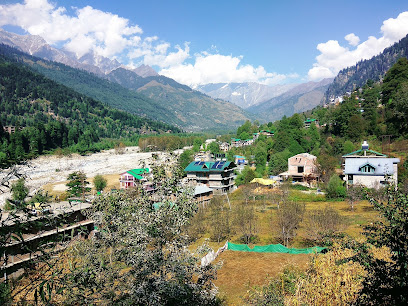
Tilicho Hotel
11.7 km
Discover the perfect blend of comfort and adventure at Tilicho Hotel in Tanki Manang, your gateway to the Annapurna region's breathtaking landscapes.

Hotel Yeti, Manang
11.8 km
Discover the enchanting Hotel Yeti in Manang, where comfort meets adventure amidst breathtaking Himalayan landscapes.

Tilicho Lake
11.9 km
Experience the breathtaking beauty of Tilicho Lake, one of the highest lakes in the world, surrounded by majestic Himalayan peaks.
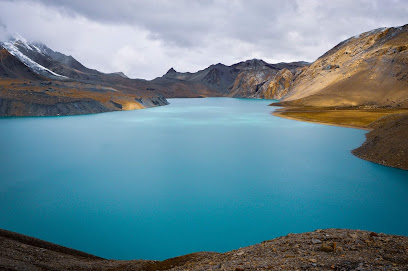
PRAKEN GOMPA
12.7 km
Experience tranquility at Praken Gompa, a stunning Buddhist temple in Tanki Manang, surrounded by the majestic Himalayas and rich in spiritual heritage.
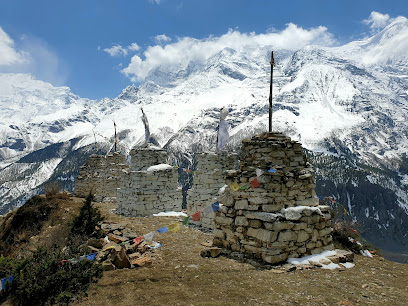
Khumai dada खुमाई डाँडा
23.1 km
Discover the breathtaking beauty of Khumai Danda, a must-visit hiking area on the Great Machhapuchchhre Trail, offering stunning views and serene landscapes.
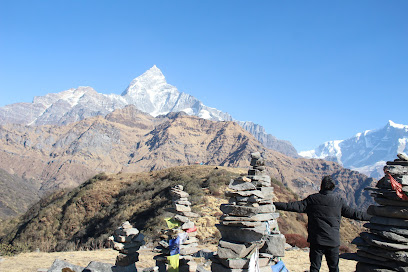
Annapurna Circuit Trek अन्नपूर्ण सर्किट
23.7 km
Experience the breathtaking beauty of the Annapurna Circuit Trek, where majestic mountains, rich culture, and stunning landscapes await every adventure seeker.
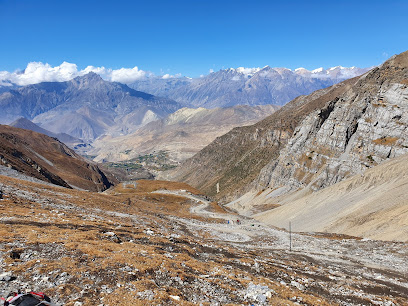
Kapuche Glacier Lake, कपुचे हिमताल
24.9 km
Experience the breathtaking beauty of Kapuche Glacier Lake, a hidden gem in the Himalayas, perfect for adventure seekers and nature lovers alike.
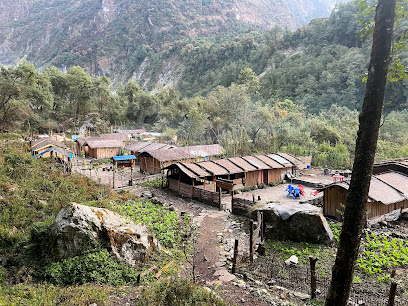
Shree Muktinath Temple
25.0 km
Explore the sacred Shree Muktinath Temple, an iconic pilgrimage site nestled in the breathtaking Annapurna region, rich in spirituality and natural beauty.
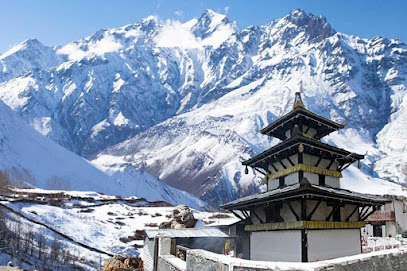
Muktinath lower Mustang Nepal
25.2 km
Explore the spiritual heart of Nepal at Muktinath, where Himalayan beauty meets divine serenity in a sacred pilgrimage experience.
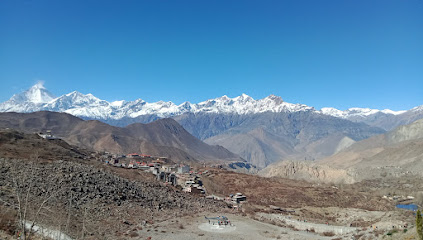
Annapurna Conservation Area
26.1 km
Explore the breathtaking beauty and rich culture of the Annapurna Conservation Area, a must-visit national park in Nepal for every adventurer's itinerary.
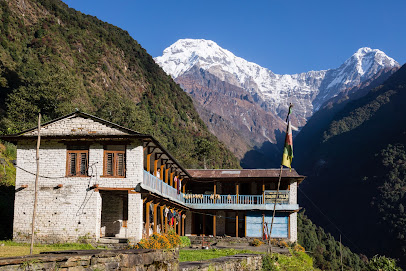
HUGU
26.4 km
Explore the serene hiking trails of HUGU in Parche, Nepal, featuring breathtaking views and unique suspension bridges.
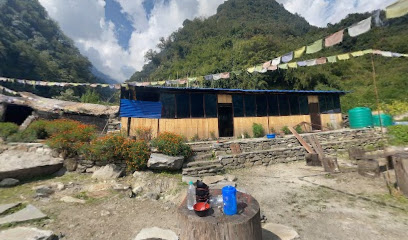
Ghandruk
27.1 km
Discover the enchanting village of Ghandruk, a trekking haven in Nepal's Annapurna region, where breathtaking views and rich culture await every traveler.
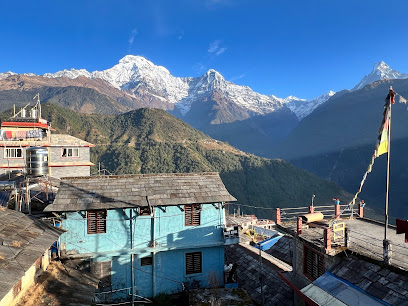
Lamjung Himal
28.0 km
Explore the stunning Lamjung Himal, a breathtaking ridge in Nepal known for its majestic views, trekking adventures, and rich local culture.
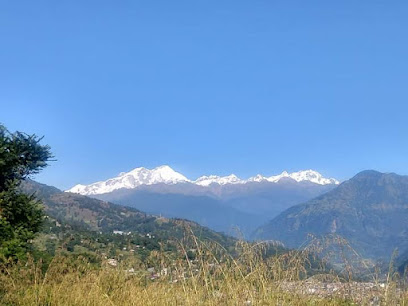
Chhairo Gompa
28.8 km
Explore Chhairo Gompa, a serene Buddhist temple in Mustang, Nepal, where spirituality meets stunning Himalayan landscapes.
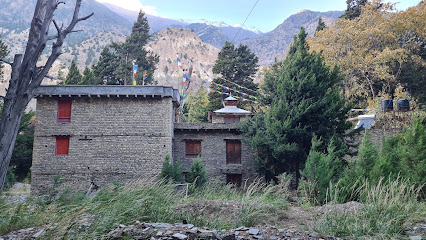
Unmissable attractions to see
Tharpu Chuli
5.7 km
Experience the breathtaking beauty of Tharpu Chuli, a must-visit destination for adventurous travelers in the Annapurna region of Nepal.
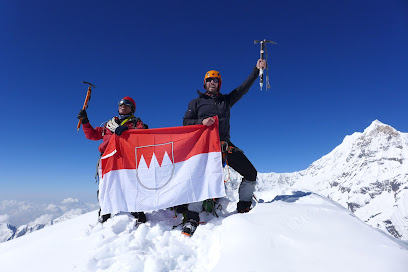
Annapurna I
5.9 km
Discover the breathtaking heights of Annapurna I, a majestic peak in the Himalayas, offering incredible trekking adventures and stunning panoramas.
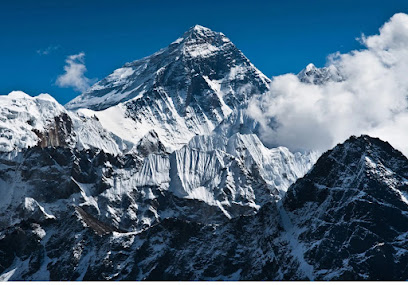
Machhapuchhare Base Camp
8.3 km
Explore the breathtaking Machhapuchhare Base Camp, a serene retreat nestled in the stunning Annapurna region of Nepal, ideal for trekkers and nature enthusiasts.
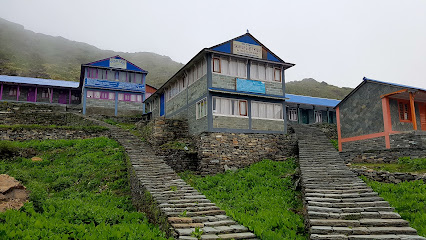
Mt.Ikru
9.0 km
Explore the breathtaking beauty of Mt. Ikru in Ghandruk, a stunning destination perfect for trekking and immersing in nature's wonders.
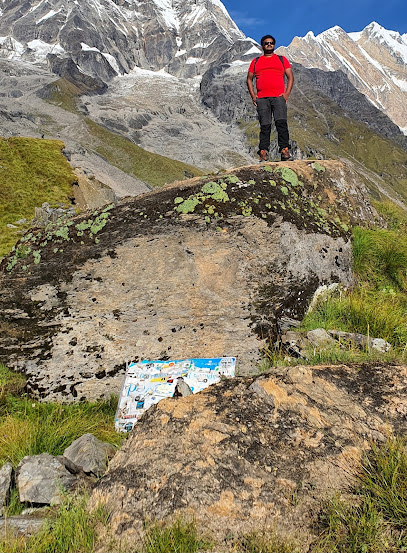
Annapurna Base Camp Trek
9.2 km
Explore the breathtaking Annapurna Base Camp Trek, where stunning landscapes and rich culture meet in the heart of the Himalayas.
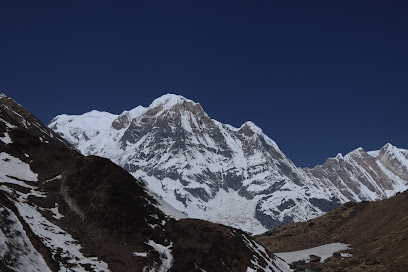
Annapurna Sanctuary
9.2 km
Discover the breathtaking beauty of Annapurna Sanctuary, a must-visit Himalayan destination for adventure seekers and nature lovers alike.
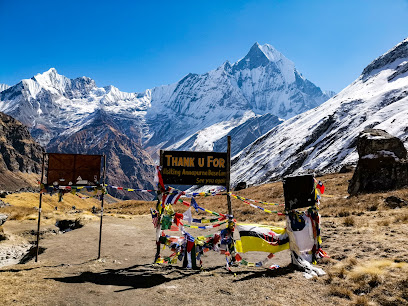
Shree kharka
9.2 km
Experience the serene beauty of Shree Kharka in Manang, Nepal, where breathtaking landscapes meet rich local culture.
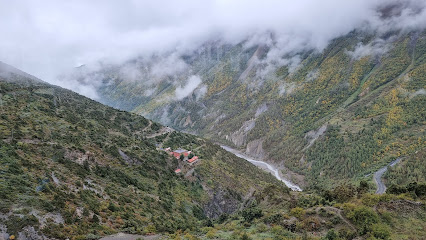
SARAD VIEW POINT
9.3 km
Discover the breathtaking beauty of Sarad View Point, a must-visit tourist attraction in Nepal with stunning Himalayan vistas.
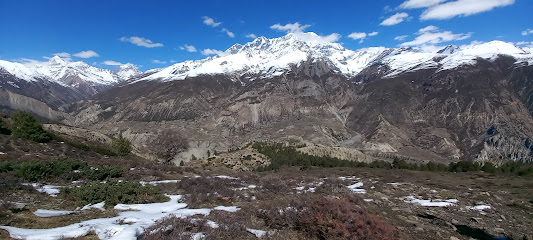
Annapurna I East
9.3 km
Discover the breathtaking beauty of Annapurna I East, a majestic mountain peak in Nepal, perfect for adventure seekers and nature enthusiasts.
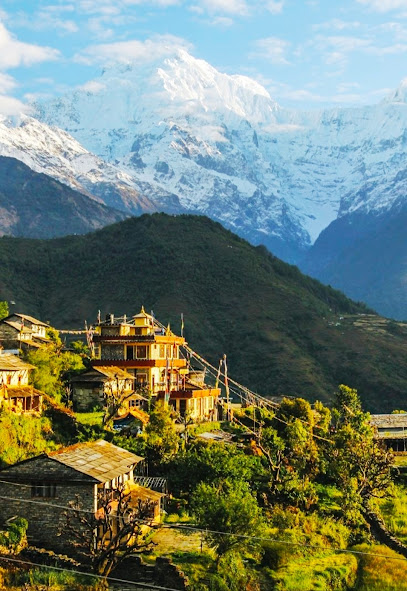
Tilicho Trail
9.4 km
Experience the breathtaking beauty of the Tilicho Trail in Nepal, a must-visit hiking destination for adventure seekers and nature lovers alike.
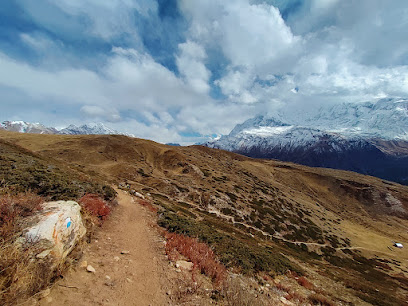
Annapurna I Middle Peak
9.5 km
Discover the breathtaking beauty and thrilling trekking experiences at Annapurna I Middle Peak, a must-visit destination in the Himalayas of Nepal.
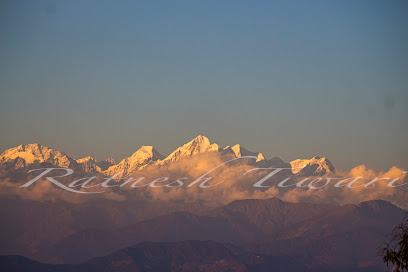
Trail to yak kharka
9.6 km
Explore the breathtaking Trail to Yak Kharka in Khangsar, Nepal, where stunning landscapes and serene nature await every adventurous traveler.
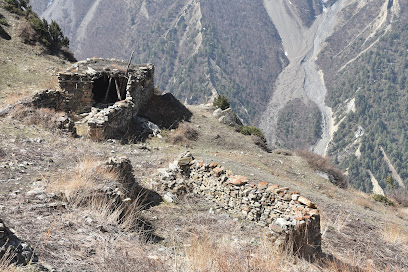
22 ghumti (२२ घूमती)
9.7 km
Explore the breathtaking hiking trails of 22 Ghumti in Khangsar, where stunning landscapes and tranquility await outdoor enthusiasts.
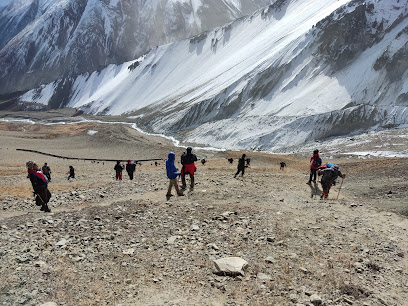
Machhapuchhare
10.6 km
Discover the serene beauty of Machhapuchhare, the sacred fish-tail mountain peak in the heart of Nepal's Annapurna range, a must-visit for nature lovers.
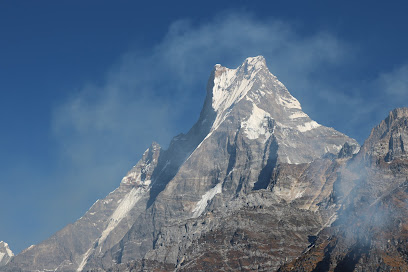
YAK HERDERS SHADE MANANG ANNAPURNA 3 BASE
10.6 km
Discover the tranquil beauty and rich culture at Yak Herders Shade in Manang, Annapurna, a must-visit for every traveler seeking authentic experiences.
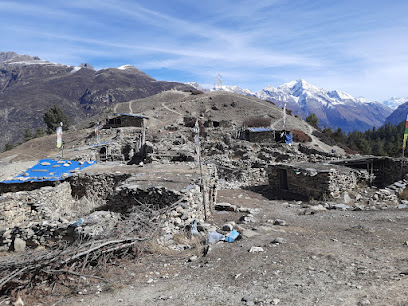
Essential places to dine
Hiimalayan Restaurant
9.4 km
Experience authentic Himalayan cuisine in Khangsar with stunning views and warm hospitality at Himalayan Restaurant.
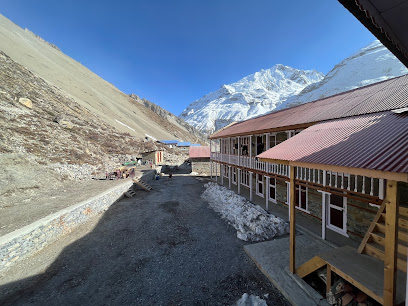
Manang
10.6 km
Experience authentic Nepali cuisine amidst breathtaking Himalayan landscapes in charming Manang.
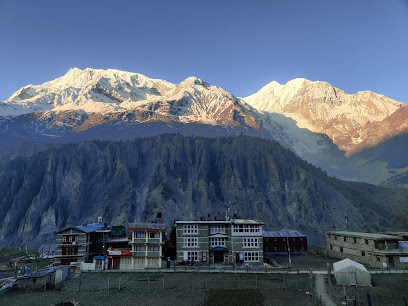
Tilicho Tea House
11.1 km
Discover authentic Himalayan flavors at Tilicho Tea House in Khangsar – where every meal is a journey through tradition.
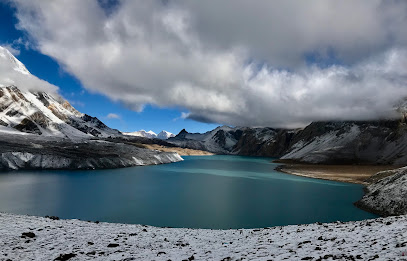
Hotel View Point Deurali & Restaurant
11.6 km
Experience stunning mountain views and delightful cuisine at Hotel View Point Deurali & Restaurant in Annapurna Base Camp.
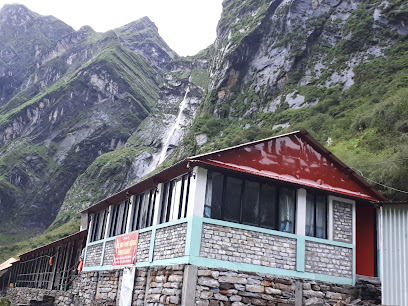
Gyalzen Lodge & Restaurant
11.7 km
Discover authentic Nepali flavors at Gyalzen Lodge & Restaurant in Tanki Manang—where every meal is a journey through Himalayan cuisine.
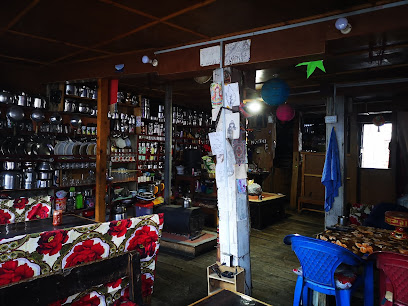
Dal Bhat Restaurant & Shop
11.7 km
Discover authentic Nepali flavors at Dal Bhat Restaurant & Shop in Tanki Manang—where every meal tells a story.
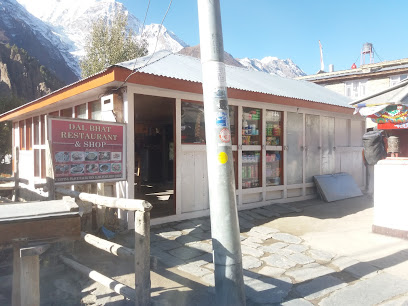
Tibetan kitchen Manang
11.7 km
Discover authentic Tibetan cuisine at Tibetan Kitchen Manang in Tanki Manang – where every dish tells a story.

Nirvana Hotel and Restaurant
11.7 km
Discover the flavors of Nepal at Nirvana Hotel and Restaurant in Tanki Manang—where comfort meets exquisite local cuisine.
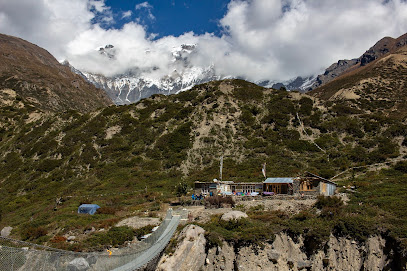
Tsering Restaurant & Bar
11.7 km
Discover the flavors of Nepal at Tsering Restaurant & Bar in Bhraka – where every dish tells a story against the backdrop of stunning Himalayan views.
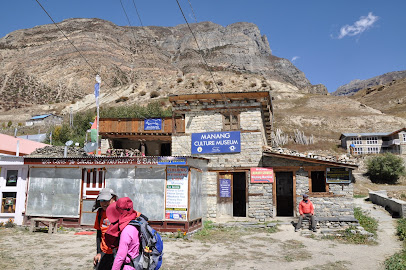
Dukki Restaurant & Cottage
11.7 km
Discover authentic Nepali flavors at Dukki Restaurant & Cottage in Tanki Manang – where every meal tells a story.
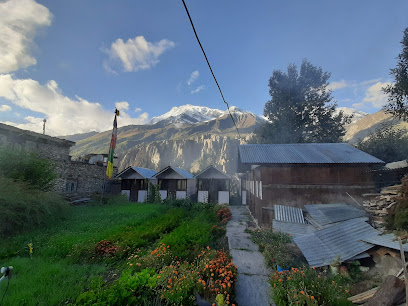
Annapurna Restaurant Cafe & Bar
11.8 km
Experience authentic flavors at Annapurna Restaurant Cafe & Bar amidst breathtaking mountain views on your adventure through Nepal.
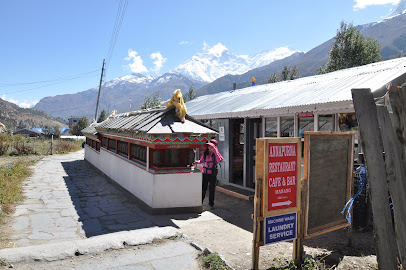
Manang , Braka
13.2 km
Discover the authentic taste of Nepal at this charming restaurant in Braka, nestled in the breathtaking landscapes of Manang.
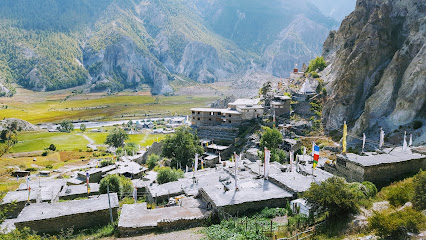
RAJU RESTAURANT
13.6 km
Experience authentic Nepalese cuisine at Raju Restaurant in Tanki Manang – where every dish tells a story.
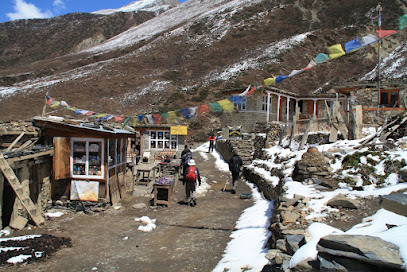
Bamboo Lodge Restaurant
17.3 km
Savor authentic Nepalese cuisine amidst breathtaking mountain views at Bamboo Lodge Restaurant in Ghandruk.
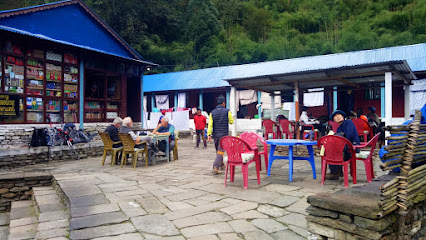
Peaceful Hotel
17.6 km
Experience unparalleled tranquility and stunning mountain views at Peaceful Hotel in Ngawal - your ideal retreat in Nepal's Annapurna region.
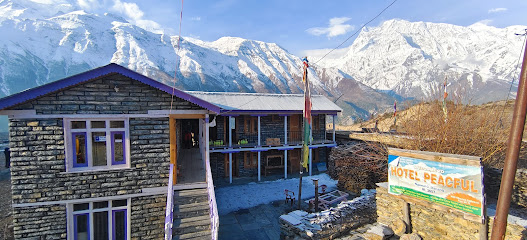
Markets, malls and hidden boutiques
Khangsar Store
9.0 km
Explore the vibrant Khangsar Store, an outlet mall in Nepal offering unique shopping experiences and a taste of local culture amidst stunning landscapes.
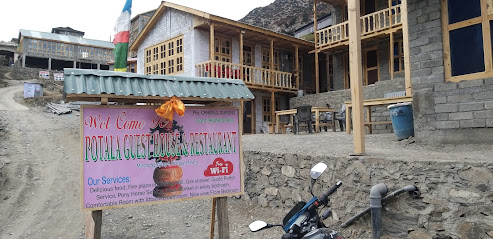
Annapurna trekking shop
11.7 km
Explore the Annapurna region with confidence - gear up at the Annapurna Trekking Shop in Manang, your adventure starts here!
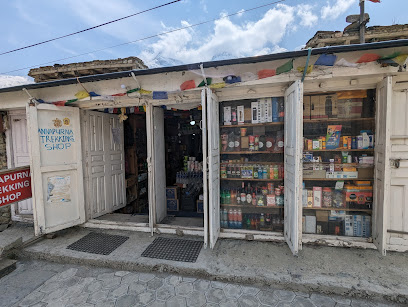
Karma shop
12.5 km
Experience the local charm and unique offerings at Karma Shop in Bhraka, a must-visit destination for tourists exploring Nepal's stunning landscapes.

Royal
17.5 km
Explore local crafts and flavors at Royal Store in Ngawal, a charming destination that showcases the vibrant culture of Nepal.

Aakriti collection home decor and fancy
22.4 km
Discover unique home decor and fancy items at Aakriti Collection, a treasure trove of local craftsmanship in Deurali, Nepal.
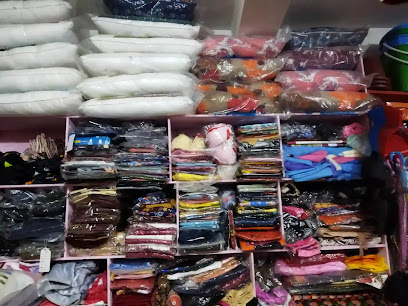
Jogidha
24.1 km
Explore the vibrant store of Jogidha in Nepal, a treasure trove of local crafts and unique souvenirs that reflect the rich culture.
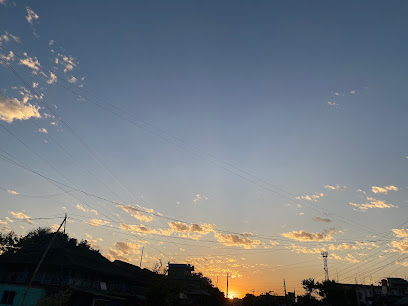
Panorama Inn Mustang Nepal
25.8 km
Experience the enchanting beauty of Mustang at Panorama Inn, where adventure meets tranquility in a serene resort setting.
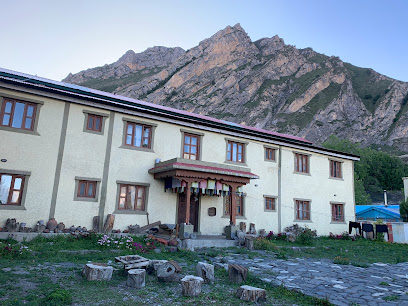
Black Drop
27.3 km
Experience the rich flavors of Ghandruk at Black Drop, a cozy coffee shop offering locally sourced brews and breathtaking mountain views.
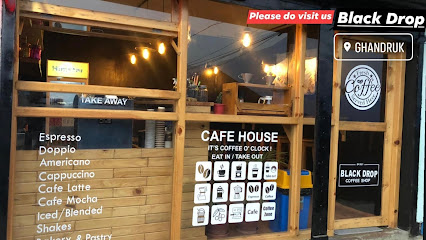
AA sports
28.1 km
AA Sports in Jomsom: Your adventure begins with the best sporting goods and expert advice in the heart of the Himalayas.
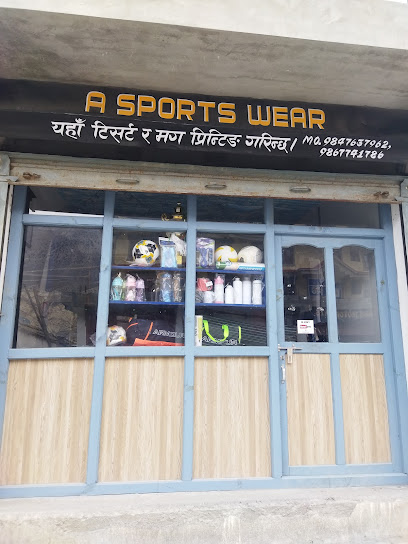
People’s plaza
28.3 km
Experience the heart of Jomsom at People's Plaza, a vibrant shopping destination offering local crafts, delicious cuisine, and a taste of Nepalese culture.

Shreeraaj handmade shop
28.3 km
Discover unique, handcrafted fashion accessories at Shreeraaj Handmade Shop in Jomsom, blending tradition with contemporary elegance.

Jhakash
28.3 km
Explore the charm of Jhakash in Jomsom, where unique local crafts meet authentic Nepali culture for an unforgettable shopping experience.

Our mustang fancy jomsom
28.5 km
Discover the vibrant blend of traditional and modern women's fashion at Our Mustang Fancy Jomsom in the heart of Nepal.
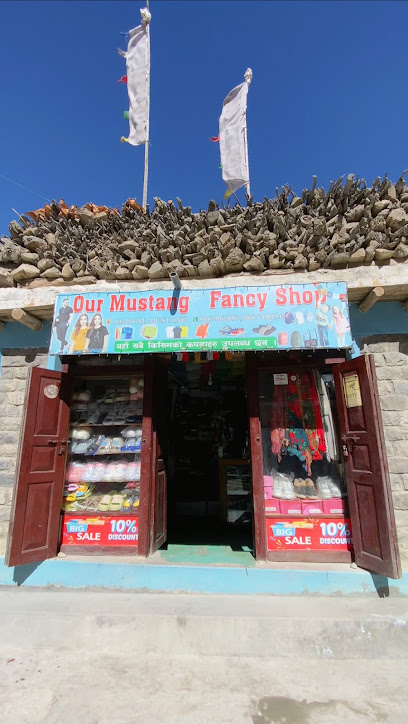
Himalayan Java Gallery Cafe
28.7 km
Experience the perfect blend of coffee, art, and live music at Himalayan Java Gallery Cafe in Jomsom, Mustang.
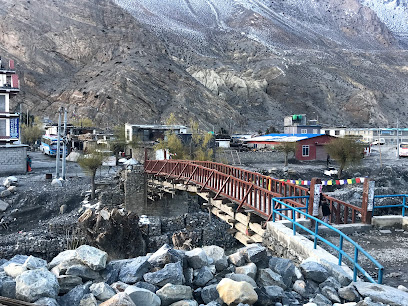
Korala Fancy Shop Center
28.8 km
Experience the charm of Nepali fashion at Korala Fancy Shop Center in Jomsom, where every piece tells a story.
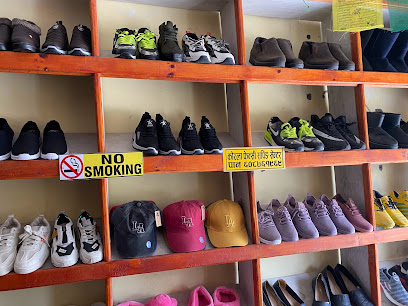
Essential bars & hidden hideouts
Black and white bar and music venue
22.4 km
Discover the lively Black and White Bar in Machhapuchchhre, where vibrant music and local flavors create an unforgettable nightlife experience.

Deepak's cottage
23.9 km
Discover Deepak's Cottage in Lwang Ghalel, a serene bar offering breathtaking views and a taste of local culture amidst the stunning Himalayan landscape.

धुम्बा ताल जोमसोम
24.9 km
Explore the tranquility of धुम्बा ताल in Jomsom, a serene lake surrounded by majestic mountains and rich local culture.

Roka homestay
26.7 km
Discover the charm of Roka Homestay in Lwang Ghalel, a serene escape into Nepali culture and breathtaking natural beauty.

Cravend Restro and Bar
28.8 km
Experience the flavors of Nepal at Cravend Restro and Bar, where delicious food, refreshing drinks, and stunning mountain views await you.
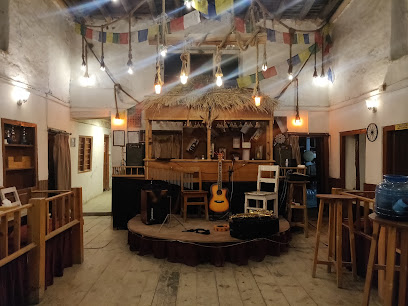
TT ministar
28.8 km
Experience the charm of TT ministar, a cozy bar in Sardi Khola, perfect for relaxation and mingling with locals after a day of exploration.

KINGDOM RESTRO BAR & LIVE MUSIC (THAKALI BHANCHA GHAR)
28.8 km
Discover the essence of Jomsom at Kingdom Restro Bar & Live Music, where authentic Nepalese cuisine meets vibrant nightlife and live entertainment.
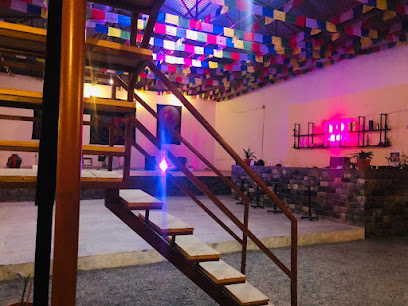
Man maiju chok
29.2 km
Discover the vibrant nightlife of Kathmandu at Man Maiju Chok, a lively bar offering local drinks and a friendly atmosphere.

Dhaulagiri Lodge and Restaurant
29.3 km
Discover the charm of Dhaulagiri Lodge and Restaurant, a serene retreat in Tatopani offering delightful local cuisine and stunning mountain views.
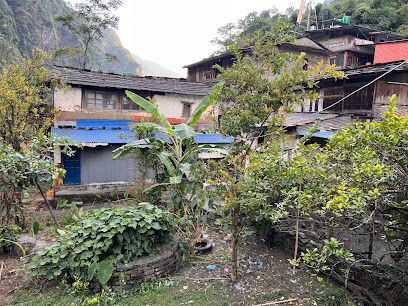
sss Trade suppliers
29.4 km
Discover Namarjung's vibrant bar scene at SSS Trade Suppliers, where friendly atmosphere and delightful drinks await every visitor.
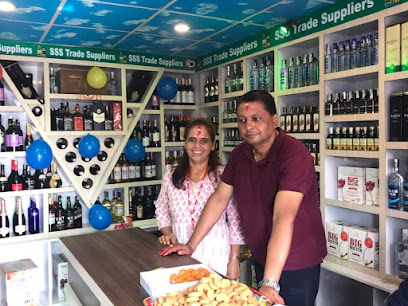
Mamta
29.5 km
Experience the vibrant nightlife at Mamta, a cozy bar in Namarjung offering a delightful selection of beverages in a welcoming atmosphere.

Rabin bhujel
29.5 km
Discover the charm of Rabin Bhujel, a cozy bar in Namarjung, offering a perfect blend of local drinks and warm hospitality for every traveler.

Lamahi Dang
29.5 km
Experience the lively atmosphere of Lamahi Dang, a vibrant bar in Namarjung where locals and tourists come together to unwind and socialize.
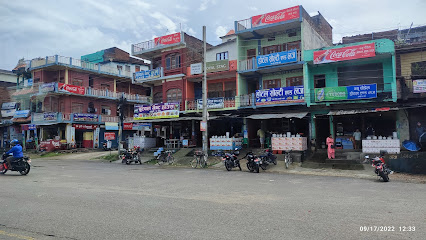
Koshi
29.5 km
Experience the vibrant nightlife at Koshi, a bar in Namarjung offering delightful drinks and a cozy atmosphere for every traveler.

Sumit giri
29.5 km
Discover the vibrant spirit of Namarjung at Sumit Giri, where delightful drinks and local culture blend seamlessly.




